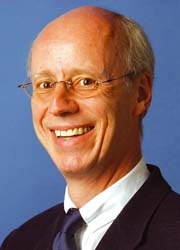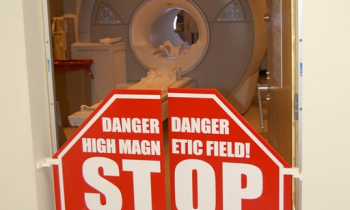Radiology at University Hospital Freiburg
How the reunification of two disciplines and internal restructuring produced internationally competitive research, medical training and patient care
Basic research and clinical patient care became separate disciplines in the 70s and 80s.

In the 90s the radiology department at University Hospital Freiburg, Germany, decided to restructure so that it could further develop radiology as a clinical discipline as well as increase its basic research focus. This plan included the creation of two separate roles, those of a medical director and a research director but with a shared budget responsibility.
Professor Mathias Langer was appointed Medical Director of the Radiological Diagnostics Department, and Professor Juergen Hennig became head of the new Research division within the department of Radiology.
When we asked about the background that led to the restructuring at Freiburg, Prof Langer first explained that, as in university hospitals in Germany, in the 1970s and 80s basic research, medical-technology development and clinical research were separate and usually not tightly linked. This, he said, rather limited the scope for scientific studies, and most technological developments and technological research was carried out by manufacturers.
Today, the Research in Radiology division at Freiburg focuses on MR physics and molecular radiology, and the clinical section covers patient care and clinical research, both foci are extremely closed cross-linked, via personal and organisational links. How has this worked for the institute? ‘Over the past 15 years, the radiology division of Freiburg expanded its range of services, which raised our turnover by 5%, to 10% annually,’ Prof Langer explained. ‘Strict controls also significantly improved profits. Top line care is assured – we have multiple high-field MRI and state-of-the-art CT equipment, plus angiography facilities and fully digital radiology.’ Since the early 90s, he added, the research side has also expanded significantly. ‘Millions of euros are provided by third parties as research funds every year. So, we started with two scientists for basic MRI research, we now have about 70 researchers working on MR development and molecular radiology.’
Asked how their roles interrelate, Prof Langer explained: ‘Professor Hennig leads the scientific team for basic research as well as for the so called bench to bedside projects and he is responsible for the acquisition of all research resources. I supervise the clinical radiologists, radiographers and IT team, as well as the clinical research projects. In addition to the general and paediatric radiology departments, there is also a neuroradiology department. The significant department expansion caused by Freiburg’s radiology-research growth and also due to the mentioned high level of clinical care, this has led to financial success for the hospital. Prof Langer emphasised: ‘Our approach is to have neither a spatial nor intellectual separation of basic and clinical research. The joint use of the research equipment, joint studies based on internally developed basic research, as well as the shared responsibility for the division’s overall budget, have encouraged and strengthened cooperation at all levels. Despite the tight budgets of today, the institute is now a highly sought after medical and basic research training facility, not only due to its sophisticated basic research programme, but also for the radiological training programme with state-of-the-art equipment. The close proximity of all the relevant basic research disciplines, from molecular radiology to technology equipment to clinical radiology makes our university hospital an attractive location for young radiologist as well as for researchers. Finally, we have proved that university-based radiology can be internationally competitive in basic medical research as well as in medical training.
01.03.2009











